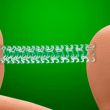Due to the proven long-term results and substantial increase in the number of transcatheter aortic valve implantation (TAVI) procedures conducted, the application of TAVI has been extended to clinical situations outside the original scope, such as non-calcified aortic regurgitation (NCAR). Device placement in these new scenarios entails a technical challenge due to the absence of<a href="https://solaci.org/en/2023/08/23/myval-device-in-non-calcified-severe-aortic-regurgitation/" title="Read more" >...</a>
SOLACI/SBHCI 2023: Scientific Coverage – Day 2
The second day of the SOLACI/SBHCI 2023 Congress, the largest interventional cardiology meeting in Latin America, organized by the Latin American Society of Interventional Cardiology (SOLACI) and the Brazilian Society of Hemodynamics and Interventional Cardiology (SBHCI), held in Rio de Janeiro, featured various national and international guests, along with important sessions on the main topics<a href="https://solaci.org/en/2023/08/03/solaci-sbhci-2023-scientific-coverage-day-2/" title="Read more" >...</a>
STREAM-2: Reduced Dosage of Tenecteplase for Patients over 60 Years Old
Reduced dosage of tenecteplase in elderly patients undergoing a pharmaco-invasive strategy. Delays in achieving timely reperfusion in patients with acute coronary syndrome with ST elevation (STEACS), whether through fibrinolysis or primary percutaneous coronary intervention (PCI), are associated with increased mortality. European guidelines establish a target reperfusion time of 120 minutes after the first medical contact<a href="https://solaci.org/en/2023/07/24/stream-2-reduced-dosage-of-tenecteplase-for-patients-over-60-years-old/" title="Read more" >...</a>
ABSORB IV – Improving Bioresorbable Scaffolds: A Long Road
5-year followup of bioresorbable scaffolds in selected and better prepared lesions (ABSORB IV). Historically, when comparing previously used therapies, such as conventional balloon angioplasty (BA) against bare metal stent (BMS) and later against drug eluting stent (DES) implantation, we see significantly improved outcomes. These advances have shown reduced recoil and more effective restenosis inhibition, compared<a href="https://solaci.org/en/2023/07/19/absorb-iv-improving-bioresorbable-scaffolds-a-long-road/" title="Read more" >...</a>
No Reflow after Primary PCI in STEMI: An Angiographic Analysis of the TOTAL Study
In the early days of percutaneous coronary intervention (PCI) in patients with ST elevation acute myocardial infarction (STEMI), no reflow phenomenon was known as an indicator of the worst possible outcomes in terms of left ventricular remodeling, infarct size, ejection fraction and mortality, at long term. The TOTAL study (Routine Aspiration Thrombectomy with PCI Versus<a href="https://solaci.org/en/2023/07/17/no-reflow-after-primary-pci-in-stemi-an-angiographic-analysis-of-the-total-study/" title="Read more" >...</a>
Mitral Valve Edge to Edge Repair for Papillary Muscle Rupture after Acute Myocardial Infarction
With an approximate incidence of 0.05% to 0.25%, post-acute myocardial infarction (AMI) mitral valve failure caused by papillary muscle rupture is not exactly common. However, it is associated to high mortality rate, ranging between 36% and 80%. Current guidelines recommend surgical treatment, but more often than not surgery involves prohibitive or extremely high risk, with<a href="https://solaci.org/en/2023/07/14/mitral-valve-edge-to-edge-repair-for-papillary-muscle-rupture-after-acute-myocardial-infarction/" title="Read more" >...</a>
COAPT: Nutritional Condition Is an Important Factor in Edge-to-Edge Treatment
Heart failure is strongly associated with malnutrition or poor nutrition, which has been linked to increased mortality during follow-up. We know that mitral regurgitation causes progressive heart failure and affects nutrition. The COAPT Study has demonstrated the benefits of edge-to-edge treatment in mitral regurgitation when combined with comprehensive medical treatment and maximum tolerated doses. However,<a href="https://solaci.org/en/2023/06/28/coapt-nutritional-condition-is-an-important-factor-in-edge-to-edge-treatment/" title="Read more" >...</a>
VASC-OBSERVANT II Substudy: Impact of Vascular Complications after TAVR
At present, transcatheter aortic valve replacement (TAVR) has become increasingly common to treat severe symptomatic aortic stenosis, with the transfemoral approach being the most common access strategy, associated to better outcomes vs. other access sites. Even though vascular complication rates (VC) have dropped given increased operation experience and improved devices, such as the use of<a href="https://solaci.org/en/2023/06/27/vasc-observant-ii-substudy-impact-of-vascular-complications-after-tavr/" title="Read more" >...</a>
TAVI in Moderate Aortic Stenosis with Low Ejection Fraction
The presence of aortic stenosis, heart failure, and decreased ventricular function is associated with poor prognosis and high mortality. For this reason, both European and American guidelines classify severe stenosis as a Class I indication. There are two retrospective analyses that demonstrate the benefits of transcatheter aortic valve implantation (TAVI) via transfemoral access. The TAVR<a href="https://solaci.org/en/2023/06/16/tavi-in-moderate-aortic-stenosis-with-low-ejection-fraction/" title="Read more" >...</a>
Intrastent Restenosis in Ostial Lesions in the Right Coronary Artery: Predictors of an Unfavorable Location
Predictors of intrastent restenosis in the right coronary artery ostium. The ostium of the right coronary artery (RCA) presents certain histological aspects. Atherosclerotic and fibrotic plaques in this area contain an abundance of smooth muscle, collagen, and a certain degree of calcification, along with thicker adventitia. Additionally, it has certain anatomical aspects such as poor<a href="https://solaci.org/en/2023/06/16/intrastent-restenosis-in-ostial-lesions-in-the-right-coronary-artery-predictors-of-an-unfavorable-location/" title="Read more" >...</a>









